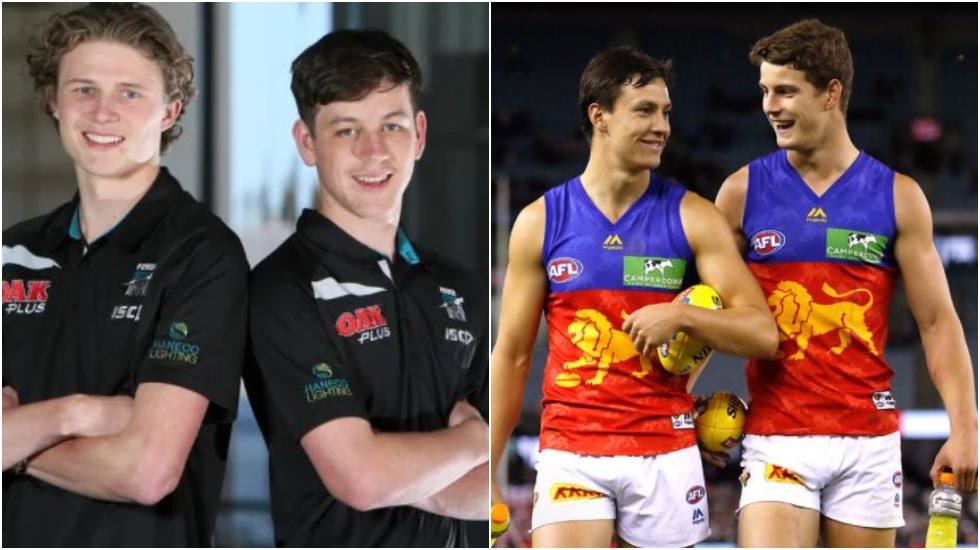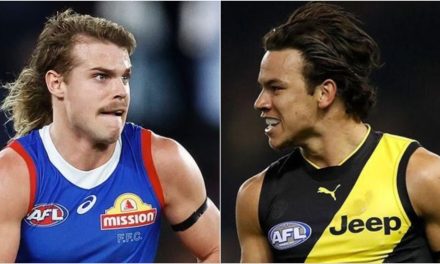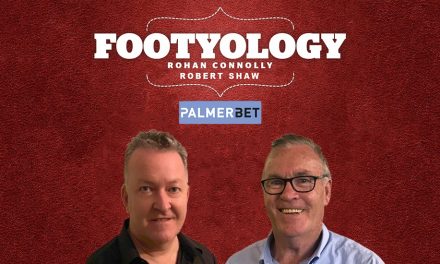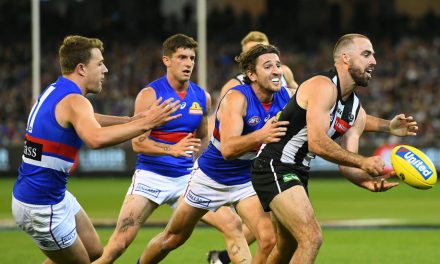Port Adelaide pair Xavier Duursma and Zak Butters (left); Brisbane’s Hugh McCluggage and Jarrod Berry.
You couldn’t ask for two more intriguing preliminary finals than this weekend, each contest featuring a precocious contender up against a seasoned heavyweight.
Brisbane and Port Adelaide are the cocky “kids” in these bouts against opponents who have been there, done that. The Lions last year made their first finals appearance for a decade. Prior to its qualifying final, Port Adelaide had played just one losing final in six seasons.
But whatever happens, their 2020 campaigns have endeared both clubs to the football world. Both play fast, attacking football, and both clubs have shown courage in remaking their playing lists via significant investments in super-talented, precocious youth.
Brisbane’s remake has been systematic and across all levels. A key has been the appointment of the right people to run the program. Like a highly-respected football person with a long involvement in the game in football manager David Noble. And, of course, coach Chris Fagan.
Neither had a large public profile. But they are a pair who have worked in the game for decades, across a variety of roles, and for whom relationship-building has always been a priority, a non-negotiable if you’re going to build effectively a new team from the ground up.
They’ve picked the right talent, encouraged, developed, fostered it. Of course, some shrewd trading has delivered the likes of Lachie Neale, Charlie Cameron and the on-field leadership of first Luke Hodge and now Grant Birchall.
But a whole clutch of young talent has played just as big a role. Five products from the national drafts of 2016-17 – Hugh McCluggage, Jarrod Berry, Cam Rayner, Zac Bailey and Brandon Starcevich – are now indispensable parts of the machine.
In some ways, it’s been a re-imagining of an entire club. And that’s easier when you have the relative licence to do so as a club with a smaller, more understanding and less demanding supporter base not pinned to the cultural baggage of historical success.
That makes Port Adelaide also an interesting case study. Culture and a history of on-field success doesn’t come a lot richer than that provided by the SANFL version of Port Adelaide.
But the AFL version, after some initial bumps in navigating the right path, has finally been able to enjoy the best of both worlds, to draw upon that undeniable spirit of the South Australian Magpies, whilst maintaining enough distance in relative cultural terms as the Power to be able to make at times radical but necessary changes.
In a couple of years, we may look back at Port’s trading out of established key players like Chad Wingard, Jared Polec, Jasper Pittard and Jarman Impey, and the acquiring of three picks in the top 20 of the 2018 draft which delivered Connor Rozee, Zak Butters and Xavier Duursma, as one of the most inspired pieces of list management in AFL history.
You’ve only got to listen to veterans like Travis Boak, Robbie Gray and Tom Rockliff wax lyrical about the precocious kids now playing alongside them to realise just how dramatic a difference the infusion of youth has made to the Power.
PLEASE HELP US CONTINUE TO THRIVE BY BECOMING AN OFFICIAL FOOTYOLOGY PATRON. JUST CLICK THIS LINK.
The AFL version of Port Adelaide is still young in historical terms, this its 24th year. In some respects, its identity is still being built. Coach Ken Hinkley may have had the odd stoush with his high-profile president David Koch, but he and club chief executive Keith Thomas have still had, compared to some older Victorian rivals, far more room in which to move.
Is it any coincidence that three old, established clubs like Richmond, Carlton and now Essendon, have all faced extended periods in the wilderness in the AFL era? I think not.
For more than three decades, the Tigers still remained in the thrall of their glory days of the late 1960s and early ‘70s, so much of the narrative in that time still surrounding the catchphrase “Eat ‘Em Alive” and names like legendary coach Tom Hafey and administrators Ian Wilson and Graeme Richmond.
Carlton, many would argue, is still emerging from the salary cap disasters of the early 2000s and the continued denial of the club and the game’s changed circumstances, apparent in searches for coaching messiahs and former champion Steve Kernahan’s defiant “We are Carlton, f— the rest” to the club’s annual general meeting in 2006.
Finally, it seems, the Blues have accepted the realities of the new football environment, and for the first time in forever, there appears genuine hope in the ranks.
Essendon not so much. The Bombers have stumbled along for much of the past two decades since their 2000 premiership.
There’s a fair argument the “we’re too big to fail” mindset, not to mention the club’s official “Whatever It Takes” motto for 2013 informed the disastrous experimentation with supplements which almost broke an entire club.
More recently, the Bombers have overrated their list and, believing they were in a premiership window, topped up with senior recruits from other clubs.
Now it’s become clear they are in fact a long way indeed from those sort of aspirations, there’s generational holes in the list and a large group of senior hands getting long in the tooth and whose performances are declining accordingly. Yet Essendon still appears of the belief it is closer to success than the bulk of the football world.
Given the departures of key players and the deficiencies of those who remain, returning to potential premiership status would be a massive enough task even for (in AFL terms) a relative “newbie” like Brisbane or Port Adelaide, let alone a club saddled by the weight of reputation Essendon is.
Call it the tyranny of history if you like. But it’s a problem neither the Lions nor Power have to deal with. Their overhauls have been thorough, honest and are clearly already paying dividends. And some bigger, supposedly more powerful clubs would be well advised to look carefully and learn from their example.
This article first appeared at ESPN.











